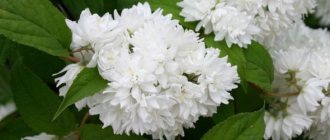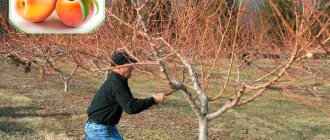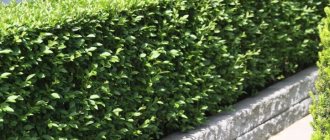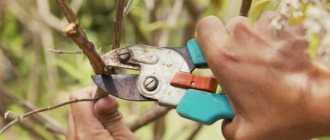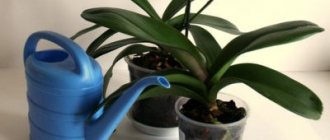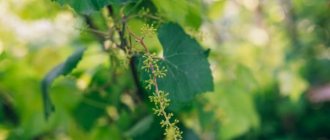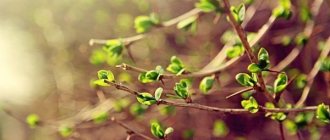Main features of landing
Spruce is an unpretentious plant. If planted correctly, the tree will definitely take root on your site.
Features of this process include:
- the seedling must have a clod of earth;
- overdrying of the roots is not allowed, so they need to be moistened as necessary;
- You should plant a tree immediately after purchasing it or digging it up in the forest yourself;
- spruce, unlike other plants, takes root well if planted in late autumn.
It is also worth noting that spruce prefers to grow in acidic soils, so think in advance which neighbors will be near the tree, because not all crops are suitable for such conditions.
Did you know? Spruce wood is most often used to produce paper.
Selection and preparation of a landing site
Many novice gardeners believe that these trees prefer to grow in the shade, since under natural conditions pine forests are dark, with little access to sunlight. But in garden plots, spruce trees, as a rule, grow better in a sunny place . The tree grows faster, forms a regular crown and looks healthier than in the shade.
Important! When choosing a site, pay attention to the color of the tree needles. Spruces of dark colors grow normally in the shade, while light ones prefer sunny areas.
Choose a location with good drainage . Excess moisture can destroy the plant. The earth should be light and “breathable”. Before planting, the area must be dug well and weeds removed.
The soil must have a certain acidity level - 4.5–6 pH . If this indicator is higher, then bacteria begin to actively develop in the soil, which can significantly reduce the growth rate of the tree.
Planting stages
The planting algorithm for this plant includes the following steps:
- Selection of seedlings.
- Place the root system two hours before planting in a container of water.
- Preparing the planting site and soil mixture.
- Digging a hole. The size will depend on the size of the coma on the seedling. Approximately, the pit should have the following parameters: depth - 50–70 cm, diameter - 40–60 cm.
- Laying a drainage layer - at least 15 cm.
- Place the seedling in the planting hole and fill it with prepared soil.
- Watering a young tree with two buckets of water.
- Mulching around the trunk.
Mistake 4: Ignoring the Individual Requirements of Conifers
In order for your coniferous pet to develop well in a new place, it is important not to ignore its species requirements, but to create optimal conditions for development.
You can find a large assortment of different types of conifers in our catalog, which combines offers from various gardening online stores. Select seedlings of coniferous plants.
Requirements of fir trees
- choice of landing site: shaded; exclude areas with close groundwater;
- soil for backfilling: turf, leaf soil, peat, sand (2:2:1:1);
- drainage is required: a layer of broken brick and sand 15-20 cm;
- planting depth 50-70 cm;
- prevent trampling and soil compaction, especially in tree trunk circles.
Ate along the wall
Cypress requirements
- choice of planting site: partial shade, variegated forms - in the sun;
- soil for backfilling: humus, leaf soil, peat, sand (3:2:1:2);
- drainage is required: a layer of broken brick and sand up to 20 cm;
- planting depth 70 cm, less often up to 1 m.
Lawson's cypress
Larch requirements
- choosing a landing site: open sunny places; for Japanese larch – partial shade;
- soil for backfilling: leaf soil, peat, sand (3:2:1);
- drainage only on heavy soils: a layer of broken bricks up to 20 cm;
- planting depth: 70-80 cm;
- plants are planted in a permanent place at the age of 4-5 years;
- planting time - before buds open;
- preservation of young thin roots with mycorrhiza.
Tender larch
Juniper requirements
- choosing a landing site: sunny places;
- soil for backfilling: peat, turf soil, sand (2:1:1); the ratio may vary depending on the species: for example, Siberian juniper prefers sandy soils, Cossack juniper grows well on calcareous soils, Virginia juniper - on clay soils;
- drainage is required: a layer of broken brick and sand 15-20 cm;
- planting depth 70 cm, with soil added to the hole.
Junipers
Fir requirements
- choosing a landing site: shady places;
- Seedlings take root better at the age of 5-10 years;
- soil for backfilling: clay, leaf soil or humus, peat, sand (2: 3: 1: 1);
- drainage is required on heavy soils: a layer of broken brick or crushed stone 20 cm;
- planting depth 50-60 cm; the root collar should remain at ground level.
Requirements of pine trees
- choosing a landing site: open places;
- Young seedlings up to 5 years old take root well;
- soil for backfilling: turf soil, sand or clay (2:1);
- drainage is required on heavy soils: a 20 cm layer of broken brick, gravel or sand;
- planting depth 0.8-1 m.
Young pines
Yew requirements
- choice of planting site: semi-shady, shady places;
- soil for backfilling: turf soil, peat, sand (3:2:2);
- drainage is required: a layer of broken brick and sand 20 cm;
- planting depth: 60-70 cm.
Thuja requirements
- choice of planting location: sunny and semi-shaded places;
- soil for backfilling: turf or leaf soil, peat, sand (2:1:1);
- drainage is required: a layer of broken brick and sand 20 cm;
- planting depth: 60-80 cm.
Tui
Plantings must be mulched** to retain moisture in the soil and get rid of weeds. Repeat mulching every spring (or spring and fall) on very dry sandy or calcareous soils. You can put a decorative layer of durable mulch from gravel or shredded bark on a special spunbond fabric that will completely protect against weeds.
Spruce care in autumn
Coniferous plants can decorate any area very elegantly and stylishly. This is why spruce is popular among gardeners. Beautiful appearance is not the only advantage of this tree. The plant does not require special effort or care skills, and this is one of its main attractive advantages for gardeners. A set of standard procedures will help you keep your plant in excellent condition. Later in the article we will talk about autumn care.
Video: General recommendations for caring for coniferous plants
Watering and fertilizing
Mature spruce trees do not need additional watering. They tolerate drought well. For their existence, the moisture that natural conditions provide them is sufficient .
Young plants (1-2 years old) need to be watered frequently. They are not yet strong enough to cope with the lack of moisture on their own. As a rule, watering should be done once a week . In the fall, before the onset of cold weather, it is very important to nourish the plant with moisture. For example, if a young spruce has not reached a height of 1 m, then it is enough to pour 2 buckets of water under such a tree, and if it grows more than 1 m, the liquid should be twice as much.
In the autumn, potassium-phosphorus fertilizer will be a suitable fertilizer for spruce . Distribute 50 g of the product around the circle around the trunk and loosen the soil. It helps strengthen the root system and lignify young branches.
Important! You should not feed spruce with nitrogen fertilizers in the fall, as they increase the growth of young coniferous branches. This fertilizer should be applied only in the spring.
Mulching
Before winter, it is better to protect the plant from severe frosts. This can be done using mulching. A suitable material would be tree bark . It is this type of mulch that perfectly allows oxygen to pass through, which is very important for coniferous plants. Leaves and sawdust can cause moisture to stagnate, preventing it from evaporating properly. These care measures apply only to young trees. Mature spruce trees do not need insulation for the winter, since they tolerate low temperatures well .
A haircut
Not all types of spruce need pruning. Typically, low-growing trees are regular in shape and do not require any pruning . If you have planted a tall wild plant near your house or dacha and want to get a crown of the desired shape, then annual pruning is necessary.
Find out in more detail when and why spruce trimming is needed.
In the autumn, it is necessary to do a haircut at the beginning of September, so that the cut areas have time to heal well and are not further damaged with the onset of severe frosts. During the pruning process, you should also very carefully cut off the side branches, since their part near the trunk is a “dead zone” where the needles have not grown for a long time and have fallen off, while new buds are not formed.
A haircut can have not only a formative character, but also a rejuvenating one. The main thing is to remove no more than 1/3 of the entire green mass of spruce
Prevention from diseases and pests
In order to protect your garden as much as possible from a plant affected by a pest or disease, you need to:
- Examine the seedling carefully. Especially if you are going to transplant a forest specimen to your plot. When purchasing planting material from a nursery, also be careful. The needles should be clean, without yellow or dry areas. Bark without resin stains.
- Before planting, be sure to treat the plant with fungicides (Fundazol, copper sulfate, Skor).
- Regularly inspect the branches, trunk and soil around the tree for parasites. You need to check not only the spruce tree, but also all neighboring plants.
- Choose a suitable place for planting and be sure to provide drainage under the root system of the plant.
Did you know? In Sweden, spruce grows, which scientists estimate is about 10 thousand years old.
Preventive actions also include:
- timely watering;
- mulching;
- loosening the soil several times a season;
- pruning broken and damaged branches;
- spraying trees with Bordeaux mixture every 2 months, starting in April.
As you can see, planting a Christmas tree and caring for it is not difficult. You will only have to work hard for the first few years after planting, and then you will watch how the tree grows and decorates your garden.
Digging up spruce
In the forest you can find and dig up small one-year-old fir trees. To carefully replant a tree, you should first dig around it. The circumference of the pit should be equal to the diameter of the lower branches, and the depth should be at least 0.5 m.
The roots of the plant must be carefully removed from the ground without shaking them off. Then place the spruce on a thick cloth and carefully pack it, marking the cardinal directions with colored tape. Load the tree and a bag of forest soil into a vehicle and transport it to the planting site, being careful not to damage the branches and root system during transportation.
The soil in the forest is different from that in the garden. Therefore, you need to take soil from the forest from the place where you dug up the Christmas tree.
All varieties of spruce love light soil. They grow poorly on heavy types of soil. Before planting the plant in poor soil, it is necessary to apply mineral fertilizer (about 100 grams).

